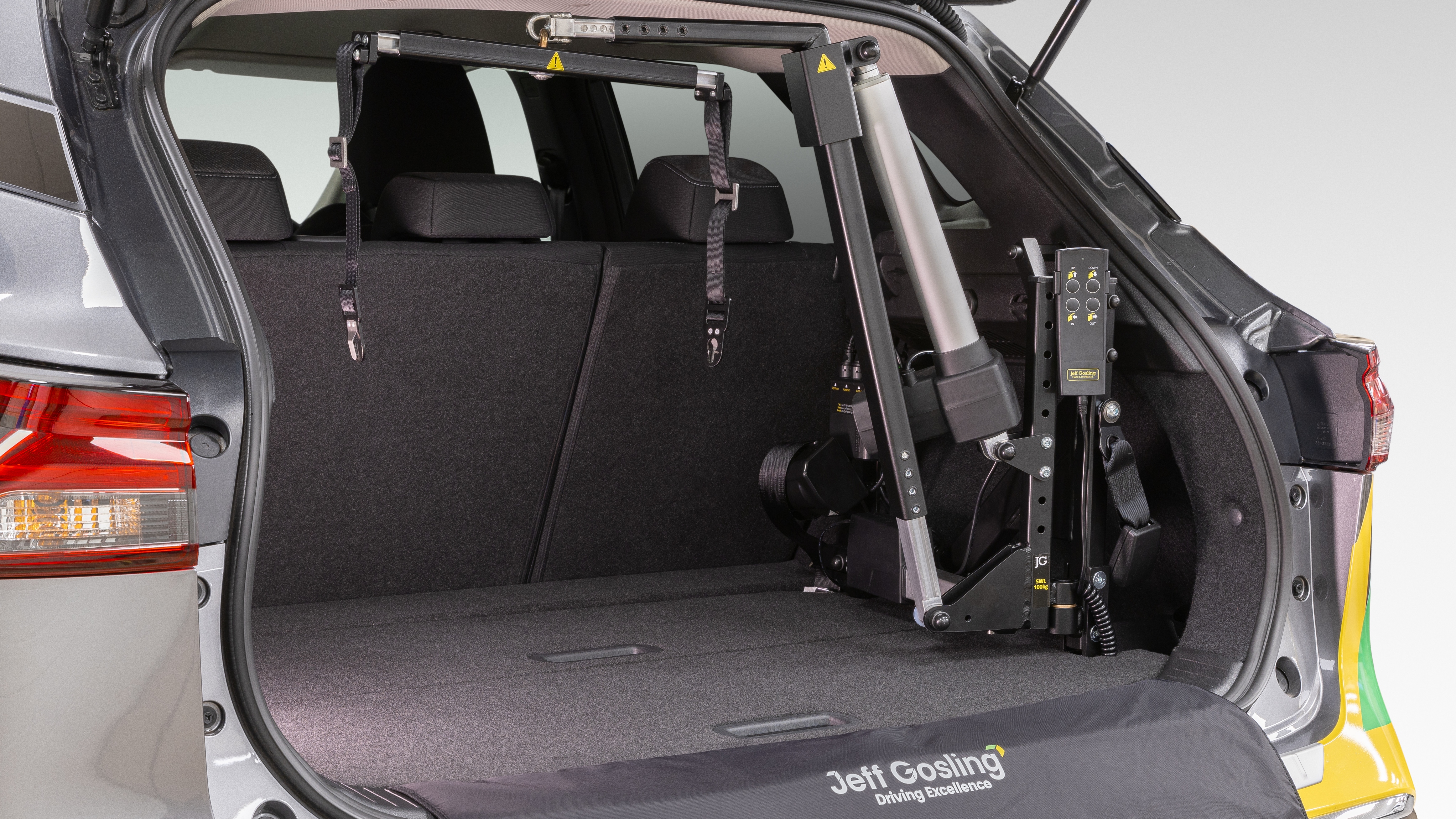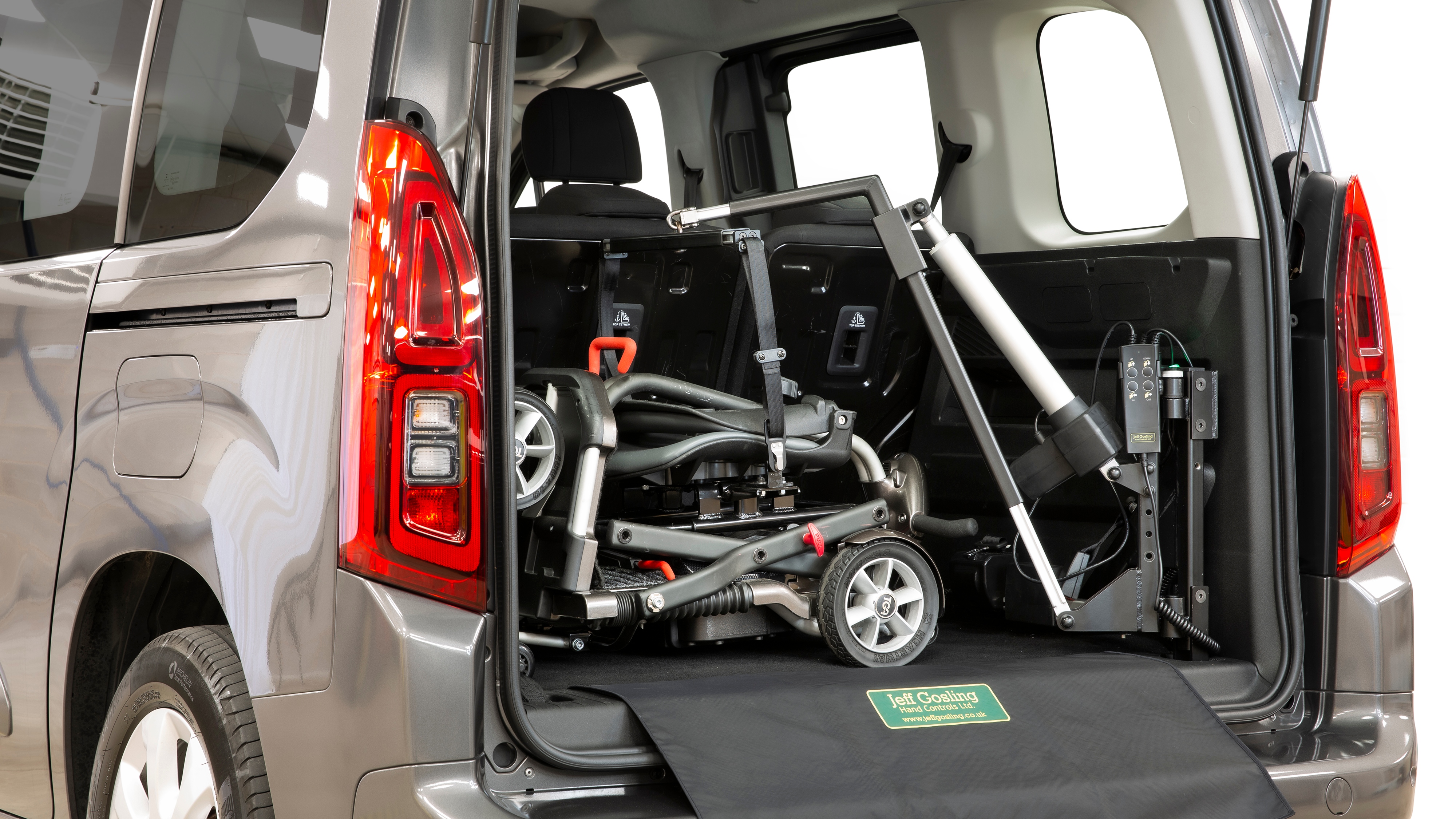If you use a wheelchair or scooter and need help getting it into your car, a boot hoist could make a big difference. Boot hoists are one of the most common adaptations fitted through the Motability Scheme, and they can give you more independence, especially if lifting heavy equipment is becoming tricky.
They’re designed to do the heavy lifting for you, making it easier to travel with your mobility aid. And if you’re thinking about whether a Wheelchair Accessible Vehicle (WAV) is right for you, a boot hoist could be another option to consider.
In this article, we’ll shine a light on how boot hoists work, the two main types, and how to find the right one for you.
Four-way hoist
Simply put, a four-way hoist moves four ways: up, down, in and out. If you need to transport a larger wheelchair or scooter, a four-way hoist is the one for you. These hoists can carry more weight than two-way hoists due to the increased movement they allow. It works at the touch of a button, taking the weight of your wheelchair or scooter, helping you manoeuvre it gently by hand into your car boot.
Best for: transporting larger wheelchairs or scooters

Two-Way Hoist
A two-way hoist only moves up and down. This means you’ll need to manoeuvre your product more than you would with a four-way hoist, so it is best suited to those who have a lightweight wheelchair. You’ll need to push the wheelchair into the boot, then make sure it’s secure using tie-downs.
Best for: transporting lighter wheelchairs or scooters. Two-way hoists take up less space in the rear load area.
Things to consider
Bear in mind, you may have to fold one or more of your rear seats down, or even remove the seat to get your wheelchair or scooter into your car. Therefore, if you frequently need to carry rear-seat passengers, a boot hoist might not be the best option for you. Additionally, due to the complexity of boot hoists, you must ask your adaptation installer to clarify how they work.
Want to see the hoists in action? Watch this short video from one of our adaptations installers, Mobility in Motion.
Your boot hoist questions answered
We’ve spoken to our adaptations specialists to help answer some of the common questions people ask before choosing one.
Why choose a boot hoist at the start of the lease?
“It’s important to note that not all adaptations work with all cars. So, it’s best to choose a boot hoist at the start of your lease so that you can ensure it works with your preferred car. Your adaptations installer or dealer should be able to assist with this.
“It’s also the most cost-effective way to arrange adaptations. What’s more, the hoist is covered by a three-year warranty and comes with a restraint and lifting bracket.”
How do you obtain a boot hoist via a car dealer?
“When you go into the car dealer to place your application for your new vehicle, you should be asked by the Motability Scheme specialist if you require any assistance with driving, access, or stowage. It’s at this point that the car dealer can select an adaptation installer and place a boot hoist onto the application.”

Can you transfer boot hoists between Scheme cars?
“Yes, as long as the hoist is transferred within three and a half years from the original fitment. However, if the hoist is older than three and a half years, you’ll have to select a new one. It’s also important to note that a hoist can only be transferred once.”
“And just like when you choose a boot hoist for the first time, you’ll have to ensure that your existing hoist works with your new car should you wish to transfer it.”
Can you get a boot hoist part way through a current lease?
“Yes, absolutely, you can, but please be aware this will be more expensive.”
Whether installing a boot hoist at the time of ordering your new car, or transferring it when you renew your lease, we aim to make it as inexpensive as possible for you to get the best solution for your needs.
Learn more about adaptations
There are more than 100 adaptation installers who supply the Motability Scheme. You can find information about the adaptations they provide and their contact details by clicking here.
If you’d like to discuss installing a boot hoist or any other adaptation on the Scheme, search for your local installer on our website and give them a call.
Get more information about the Scheme
We’ve helped over 860,000 customers keep their independence, with over 80,000 adapted vehicles on the Scheme.
Our all-inclusive package on the Scheme covers insurance, servicing and breakdown, plus your MOTs.
Image credit: Jeff Gosling
Related articles
Car adaptations: The alternative to WAVs
What makes a Wheelchair Accessible Vehicle (WAV) different?
Top tips for using public transport with a powered wheelchair or scooter
![]()








